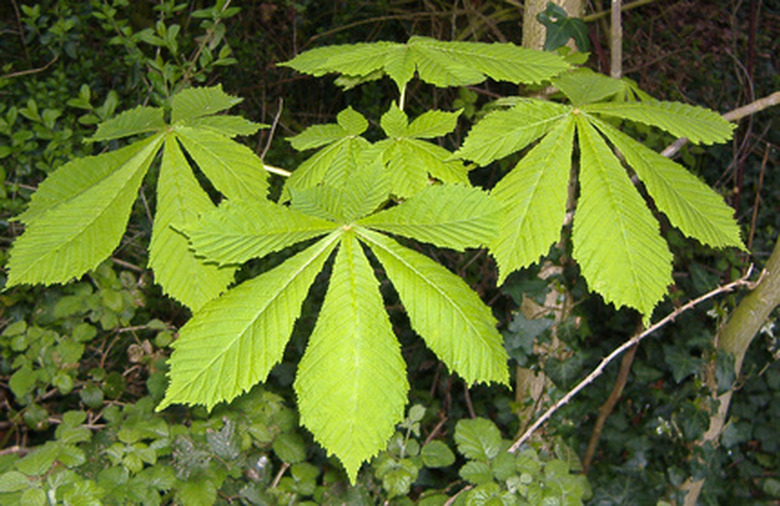Horse Chestnut Tree Identification
The horse chestnut tree, also known as Aesculus hippocastanum, is a beautiful species that is hardy in zones 4 to 7. It is used as an ornamental or shade tree in landscape design. A mature tree reaches heights of 50 to 75 feet. You can identify the horse chestnut by its leaves, flowers, fruit, twigs, bark and shape.
Chestnut Types
Castanea is the botanical name of the chestnut family. The chestnut trees that belong to this family include the chinkapin chestnut, the Japanese chestnut, the Chinese chestnut, the European chestnut, the American chestnut and hybrids of these chestnut species. The horse chestnut is not a member of this chestnut family–it is a member of the Aesculus family.
- The horse chestnut tree, also known as Aesculus hippocastanum, is a beautiful species that is hardy in zones 4 to 7.
- The chestnut trees that belong to this family include the chinkapin chestnut, the Japanese chestnut, the Chinese chestnut, the European chestnut, the American chestnut and hybrids of these chestnut species.
Leaf Identification
The leaf of the horse chestnut is its most identifiable characteristic. The leaves radiate out from the center in spoke-like fashion. There are generally seven leaves in the spoke that can be anywhere from 4 to 6 inches in length. This is known as a palmate compound leaf. The edges of the leaves are serrated and are obovate (teardrop) in shape, with the small end of the teardrop at the center of the spoke. Mature leaves are dark green in color.
Features
The horse chestnut's flowers appear in the spring and they are white in color. The upright cluster of flowers can be from 5 to 12 inches in length. The fruit of the horse chestnut is round to oblong in shape and the exterior is covered with spines. The husk is thick and leathery, which protects the seeds within the fruit. There are generally one to three brown seeds within the husk. (Note: the nuts of the horse chestnut are not edible.) As the tree matures the bark becomes scaly with rough ridges, and the color of the bark is from light gray to dark/brownish gray. The bark may also exfoliate as the tree matures, this exposes the under bark, which will be orange in color. One must take into consideration the seasonal clean-up associated with the horse chestnut tree before planting, as it has large clusters of flowers, fruit, large leaves and exfoliating bark.
- The leaf of the horse chestnut is its most identifiable characteristic.
- The edges of the leaves are serrated and are obovate (teardrop) in shape, with the small end of the teardrop at the center of the spoke.
Benefits
The canopy or crown of the horsechestnut tree is round/oval in shape. Its lower branches tend to hang down. The size and shape of this tree make it an excellent specimen for a large area, and perfect for a shade tree.
Medicinal Uses
The seeds of the horse chestnut are used for medicinal purposes. Saponin is a chemical that is found in the seeds of the horse chestnut. Saponin is also known as aescin, and it is used to increase blood circulation; the treatments can be topical or internal. Extreme caution must be used when taking horse chestnut extract as high does can be dangerous. Overdose can result in diarrhea, unconsciousness, visual disturbances, and vomiting.
- The canopy or crown of the horsechestnut tree is round/oval in shape.
